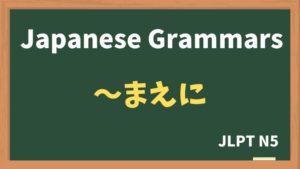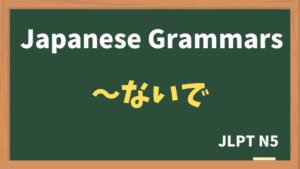
Explanation:〜ないでください
fa-check-circleMeaning
"please don't do / giving warning not to do"
Used to politely request someone not to do something. It translates to "Please don't" in English and is a common way to express prohibition or a polite request to refrain from an action
fa-check-circleForm
V(nai form)+ でください
fa-check-circlePoints
- Negative Request: It is used to ask someone not to perform a specific action.
- Verb Structure: The verb is in its negative form followed by 「でください」.
- Polite Request: It is a polite and gentle way to make a request.
fa-check-circleJLPT Level
N5
Sample sentenes
あまり 大きな 声で 話さないでください。十分聞こえていますから。
Please don’t speak very loudly because I can hear you.
まだ 問題を 見ないでください。「始めてください」と 言ってから 始めてください。
Please don’t look at the questions. Please start after I say “start”.
まだ 熱が ありますから、今日は お風呂に 入らないでください。
Please don’t take a bath because you still have a fever.
動物園では 動物に エサを あげないでください。
Please don’t feed the animals in the zoo.
美術館の 中では、絵に 触らないでください。
Please don’t touch the paintings in the art museum.
お願い、行かないでください。
Please don’t go.
冷蔵庫の 中にある ケーキは 私の ですから、食べないでくださいね。
Please don’t eat the cake inside the refrigerator because it’s mine.
今晩は、お風呂に 入らないでください。
Doctor:Please don't take a bath tonight.
押さないでください。
Please don't push me.
そこには 入らないでください。
Please don't enter there.
すみません。まどを あけないでください。
Excuse me. Please don't open the window
ここに じてんしゃを とめないでください。
Please don't park your bicycle here.
Vocabulary
| Japanese | English |
| こえ | voice |
| じゅうぶん | enough |
| もんだい | question |
| ねつ | fever |
| どうぶつえん | zoo |
| びじゅつかん | art museum |
| れいぞうこ | refrigerator |






